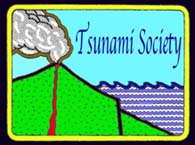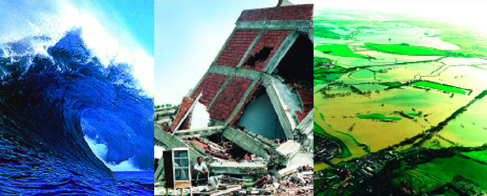ISSUES - Year 2009
ISSN 8755-6839
ABSTRACTS
for Volume 28, No 3
CAPTURING THE NEXT GENERATION OF CULTURAL MEMORIES – THE PROCESS OF VIDEO INTERVIEWING TSUNAMI SURVIVORS
W. Dudley - Dept. Marine Sciences, University of Hawaii, Hilo, Hawaii, USA
J. Goff - Australian Tsunami Research Centre, University of New South Wales, Sydney, AUSTRALIA
C. Chagué-Goff - Australian Tsunami Research Centre, Univ. of New South Wales, Sydney, AUSTRALIA
J. Johnston - Disaster Preparedness Solutions, Inc., Kailua, Hawaii, USA
ABSTRACT
Traditional story telling is rare in many cultures these days and yet stories are an effective way of educating people of all ages. The technology of modern media is increasingly accessing all corners of the world and if used wisely can help capture and communicate messages of disaster preparedness. Planned video interviewing of tsunami survivors began around 1998 and an extensive archive has been assembled at the Pacific Tsunami Museum. Video interviewing is an effective way to collect data that are both educational and scientific. The technique however, is not simple and a protocol has been developed to achieve the best results. We explain the protocol in detail using examples where appropriate, and discuss a wide range of applications that have been developed using interview materials. Recent advances in analytical techniques mean that the previously difficult to access qualitative data of these interviews are now available for more robust scientific analysis. The database continues to grow each year. It seems likely that this publicly-available database will now be available for a whole suite of new applications that can be developed.
Science of Tsunami Hazards, Vol. 28, No. 3, page 154 (2009)
CAPTURING THE NEXT GENERATION OF CULTURAL MEMORIES – THE PROCESS OF VIDEO INTERVIEWING TSUNAMI SURVIVORS
-----------------------------------------
GOVERNING EQUATIONS FOR MULTI-LAYERED TSUNAMI WAVES
Monzur Alam Imteaz - Engineering & Industrial Sciences, Swinburne University of Technology, Melbourne, AUSTRALIA.
Fumihiko Imamura - Disaster Control Research Centre, Tohoku University, Sendai, JAPAN.
Jamal Naser- Engineering & Industrial Sciences, Swinburne University of Technology, Melbourne, AUSTRALIA.
ABSTRACT
In order to develop generalized governing equations for multi-layered long wave system, a three layer system was considered. It was anticipated that equations for top layer and bottom layer will be independent on number of intermediate layer(s) and equation for intermediate layer will be generalized depending on number of intermediate layers. However, from derived equations, it is found that only top layer equations are independent of number of intermediate layers; equations for all other layers are dependent on number, extent and density of intermediate layer(s). Momentum and continuity equations for the top layer are exactly same as in the case of earlier developed governing equations for two layered system. Continuity equation for the bottom layer is also exactly same as in the case of two-layered system. Momentum equation for the bottom layer is dependent on extent and density of top layer as well as all intermediate layers. Continuity equation for intermediate layer is affected by levels of immediate bottom layer. Momentum equation for the intermediate layer is affected by extent and density of upper layer(s). Six governing equations, two for each layer are derived from Euler equations of motion and continuity, assuming long wave approximation, negligible friction and interfacial mixing. This paper depicts details derivations of the governing equations.
Science of Tsunami Hazards, Vol. 28, No. 3, page 171 (2009)
GOVERNING EQUATIONS FOR MULTI-LAYERED TSUNAMI WAVES
-----------------------------------------------
ANALYSIS AND DESIGN OF REINFORCED EARTH WALL FOR SHORE PROTECTION SYSTEM AGAINST TSUNAMI
Amit Srivastava - Dept. of Civil Engineering, Indian Institute of Science, Bangalore, INDIA
G. L. Sivakumar Babu - Dept. of Civil Engineering, Indian Institute of Science, Bangalore, INDIA
ABSTRACT
The evaluation and design of coastal shore protection works for tsunamis assumed considerable importance following the impact of the 26th December 2004 tsunami in India and other countries of Asia. The lack of proper guidelines made matters worse and resulted in the great damage that occurred. Subsequent surveys indicated that scour resulting from high water velocities was one of the prime reasons in the damage of simple structures. In some cases, it became apparent that sea walls were helpful in minimizing the degree of damage. The objective of the present study is to illustrate how proper design analysis for expected wave heights as well as the use of flexible systems such as geocells, are likely to provide better shoreline protection. Protective systems can be designed that can withstand wave forces that correspond to a variety of incidence probabilities. The present study illustrates such an analytical design approach that is necessary for a shoreline protection system and provides references to relevant wave height data for the east coast of India.
Science of Tsunami Hazards, Vol. 28, No. 3, page 186 (2009)
ANALYSIS AND DESIGN OF REINFORCED EARTH WALL FOR SHORE PROTECTION SYSTEM AGAINST TSUNAMI
--------------------------------------------
MULTIPLE LAYER IDENTIFICATION AND TRANSPORTATION PATTERN ANALYSIS FOR ONSHORE TSUNAMI DEPOSIT AS THE EXTENDING TSUNAMI DATA – A CASE STUDY FROM THE THAI ANDAMAN COAST
Chanchai Srisutam - Dept of Geology, University of Trier, Trier, GERMANY
Jean-Frank Wagner - Dept of Geology, University of Trier, Trier, GERMANY
ABSTRACT
On 26th December 2004, a strong Indian Ocean earthquake of moment magnitude 9 generated a deadly tsunami that hit the west coast of southern Thailand and many coastal nations of the Indian Ocean. Two tsunami-affected areas on the Thai Andaman coast (Ao Kheuy beach and Khuk Khak beach) were investigated. Multiple sediment layers in the tsunami deposits are identified and are analyzed. The sediment transportation patterns are also determined. Tsunami deposits consist of graded sand layers overlying the pre-existing soil. The particle size profile of the tsunami sediment and the plot of grain-size standard deviation with depth are used to identify major layers in tsunami deposit. There are three major sediment layers in the tsunami deposit in the study areas. They reflect three depositional sequences created by three tsunami run-ups. The mean grain-size of tsunami deposit and the results of sediment trend analysis show that the tsunami deposit is generally fining upwards and landwards. Each major sediment layer is created by sediments settled from suspension in a set of run-up and backwash. The percentage by weight of sediment settled from suspension during the backwash is small when it is compared to the percentage by weight of sediment settled from suspension during the run-up. The 1st depositional sequence has higher quantity of coarse grain particles than the following depositional sequences. At a mild slope shore face, sediments are transported and deposited on land far from their origins. The number of major sediment layers in tsunami deposit can be used as the extending data for reconstructing individual tsunami run-up by using numerical and/or simple models.
Science of Tsunami Hazards, Vol. 28, No. 3, page 205 (2009)
MULTIPLE LAYER IDENTIFICATION AND TRANSPORTATION PATTERN ANALYSIS FOR ONSHORE TSUNAMI DEPOSIT AS THE EXTENDING TSUNAMI DATA – A CASE STUDY FROM THE THAI ANDAMAN COAST
------------------------------------------------
EFFECT OF THE INDIAN OCEAN TSUNAMI ON GROUNDWATER QUALITY IN COASTAL AQUIFERS IN EASTERN SRI LANKA
Meththika Vithanage - Dept of Geography and Geology, University of Copenhagen, DENMARK
International Water Management Institute, Battaramulla, SRI LANKA
Karen G. Villholth - Geological Survey of Denmark and Greenland, Copenhagen, DENMARK
Kushani Mahatantila - Dept of Material Science, Shimane University, Matsue, JAPAN
Peter Engesgaard - Dept of Geography and Geology, University of Copenhagen, DENMARK
Kartsten H. Jensen - Dept of Geography and Geology, University of Copenhagen, DENMARK
ABSTRACT
Changes in water quality of a sand aquifer on the east coast of Sri Lanka due to the December 26, 2004 tsunami and subsequent disturbance due to well pumping and flushing by precipitation were investigated. Two closely spaced tsunami affected transects, spanning the ocean and an interior lagoon across a 2 km wide land strip were monitored from October, 2005 to September, 2006. Water samples were collected from 15 dug wells and 20 piezometers, from the disturbed and undisturbed sites respectively to evaluate the temporal and spatial trends in water quality. The EC values observed from the undisturbed area showed a significant decrease (3000 to 1200 µS/cm) with the rain from November 2005 to March 2006, while the values in the disturbed area appeared to have stabilized without further decline through the same period. The concentration range of EC, Ca, K, Na, alkalinity, total hardness and sulphate were higher in the disturbed site than in the undisturbed site. PHREEQC modeling showed that the mixed sea water fraction is higher in the disturbed site than in the undisturbed site, and this is likely due to the movement of the disturbed plume by water extraction through pumping and extensive well cleaning after the tsunami, causing forced diffusion and dispersion. No arsenic contamination was observed as all observed arsenic concentrations were below 10 µg/L. For the sites investigated, there are clear indications of only a slow recovery of the aquifer with time in response to the onset of the monsoon.
Science of Tsunami Hazards, Vol. 28, No. 3, page 218 (2009)
EFFECT OF THE INDIAN OCEAN TSUNAMI ON GROUNDWATER QUALITY IN COASTAL AQUIFERS IN EASTERN SRI LANKA
------------------------------
Copyright © 2009 - TSUNAMI SOCIETY
TSUNAMI SOCIETY, 1741 Ala Moana Blvd. #70, Honolulu, HI 96815, USA.
WWW.TSUNAMISOCIETY.ORG




